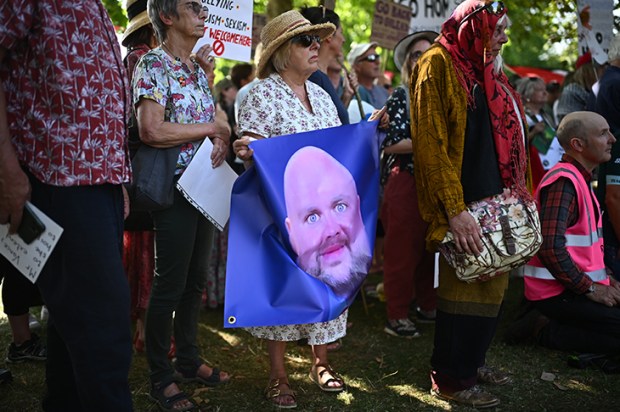Earlier this month, in the Washington Post, Jay Bhattacharya – Professor of Medicine, health economist, and current head of the US National Institutes of Health (NIH) – announced a strategic shift: the NIH will step back from pursuing mRNA vaccines for broad public health use. This was not an outright rejection of mRNA technology, which remains promising, but a response to unresolved scientific uncertainties and a profound collapse in public trust.
Bhattacharya is no stranger to dissent in public health debates. As a co-author of the Great Barrington Declaration, he championed ‘Focused Protection’ during Covid-19: shielding the vulnerable, allowing lower-risk groups to resume normal life, and building immunity through exposure. This sharply contrasted with lockdowns and mass, mandatory vaccination strategies embraced worldwide, particularly in Australia. Strategies that have left long-term public health challenges. In particular, rushing Covid vaccines to market and mandating their use without long-term safety data damaged public trust in all immunisations.
Sold as tools to stop transmission but later shown to have limited effect in that regard, mass and mandatory Covid vaccinations fuelled scepticism that is now reducing uptake for established vaccines. The accelerated rollout bypassed the years-long safety monitoring typical for vaccines, leaving unanswered questions about delayed health effects. Combined with already heavy early-life vaccine schedules and concerns over cumulative adjunct exposure, this mistrust risks long-term declines in vaccination compliance and a weakening of public health.
For the NIH, the premier US biomedical research and funding agency, to retreat from mRNA vaccines in broad deployment is no small signal, and one that Australia should heed as, by mid-2021, mRNA vaccines had become Australia’s de facto Covid-19 option. Public messaging often cast alternatives in a poor light. Queensland’s then-chief medical officer (now Governor), Jeannette Young, even told those younger than forty to avoid the AstraZeneca vaccine due to the rare risk of blood clots: ‘I don’t want an 18-year-old in Queensland dying from a clotting illness who, if they got Covid, probably wouldn’t die.’
The statement, amplified by media coverage, effectively cleared the path for mRNA dominance even as understanding of the technology was still evolving.
In announcing the updated NIH position, Bhattacharya stressed that the problem was not just poor messaging but a deeper breach of trust, driven by governmental overreach and scientific arrogance. He raised fundamental biological and regulatory issues: regulators still lack precise knowledge of how much antigen each mRNA molecule produces, where in the body the resulting proteins travel, how long they persist, and whether unintended proteins are created. From a regulatory standpoint, Bhattacharya suggested, such uncertainty should have made approval difficult. Yet in the pandemic’s urgency, caution was sacrificed.
In Australia some economists, notably UNSW Professor Richard Holden and current federal minister Andrew Leigh, argued that Australia’s vaccine rollout – which they described as the slowest in the OECD – cost lives and at least A$31 billion in economic damage. Their analysis focused on speed, not vaccine efficacy, safety profiles, or differences in mechanisms of action. The very things that Bhattacharya noted. They treated all vaccines as interchangeable widgets in an economic model, assuming away the profound biological differences between platforms and ignoring the possibility that the choice of technology could have long-term consequences.
Holden was also a lead author of the widely circulated open letter from 289 Australian economists rejecting the idea that there was any ‘trade-off between the public health and economic aspects of the crisis’. This ignored the foundational economic principle that trade-offs and opportunity costs always exist. The letter stated that the costs to economic activity ‘are far outweighed by the lives saved and the avoided economic damage due to an unmitigated contagion’. At the time, approximately 100 elderly people had died with the disease but no proof that any had died because of the disease.
In response, UNSW’s Peter Swan wrote in the Australian: ‘Would these economists be willing to see the global economy sacrificed at the altar of a single Covid-19 victim, knowing that millions could die from collapsed businesses, suicide and a depleted health system in the resulting economic conflagration? Why not urge permanent house arrest and lockdown of the entire economy to save the thousands of victims of the regular flu and death on the road?’
Holden and his co-authors also predicted that failure to lock down would result in 225,000 Australian deaths, yet countries like Sweden, which avoided strict lockdowns, recorded far fewer deaths than countries like the UK, which locked down heavily.
The contrast between the epistemic overconfidence of Australia’s economists and Bhattacharya’s caution is stark. During and after the pandemic, Bhattacharya pointed to broader institutional failures – not just in vaccine efficacy, but in scientific discipline itself. In the rush, established safeguards in drug and vaccine development, rigorous study of biological mechanisms, long-term safety monitoring, and transparent regulatory review were sidelined. The consequences were both ethical and practical.
In Australia, mRNA vaccination was not merely encouraged – for many, it was effectively compulsory. Workers in multiple sectors faced mandates; millions of schoolchildren were required to be vaccinated and everyday freedoms were conditioned on vaccination status. In such a climate, the unresolved questions Bhattacharya highlighted are not abstract – they go to the heart of informed consent.
Mandates assume that an intervention is both safe and necessary for the public good. If the leading US health research body concedes it still lacks full clarity on key safety parameters years after deployment, what level of clarity truly guided policy decisions at the time? Australia’s ‘compulsion first, questions later’ approach grows increasingly indefensible as the years pass.
Bhattacharya’s position is not anti-mRNA – it is pro-rigour. The NIH’s change of course offers a chance to restore balance between innovation and caution. The real question is whether policymakers, in Australia and elsewhere, will admit that in their rush to ‘follow the science’ they sometimes skipped it altogether. And will these 289 economists acknowledge their arrogance?
Contrasting the high-handed certainty of Australian economists including Holden and Leigh against Bhattacharya’s modest and measured stance underscores the real divide: between those who see public health as a race to maximise uptake at any cost, and those who believe safety, transparency, and consent must remain non-negotiable.
As C.S. Lewis warned: ‘Of all tyrannies, a tyranny sincerely exercised for the good of its victims may be the most oppressive.’ In the name of protecting the public, Australia embraced a form of coercion that may have inflicted lasting damage on both trust in science and the principle of informed choice. Damage that continues to ripple through government, medicine, and society today.
Got something to add? Join the discussion and comment below.
Dimitri Burshtein is a principal at Eminence Advisory. Peter Swan AO is professor of finance at the UNSW-Sydney Business School.
You might disagree with half of it, but you’ll enjoy reading all of it. Try your first month for free, then just $2 a week for the remainder of your first year.











